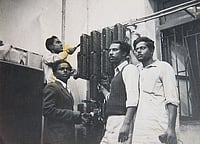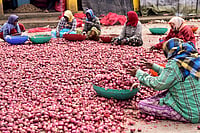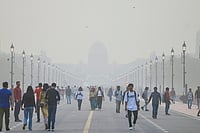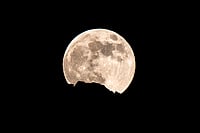The Gyanvapi Mosque case is currently entangling itself in a protracted legal and historical dispute over its alleged construction atop a demolished portion of the Kashi Vishwanath temple. Recent developments are adding complexity to this sensitive issue. As of January 25, 2024, the Varanasi district court is ordering the Archaeological Survey of India (ASI) report, submitted in a sealed cover on December 18, 2023, to be made public and shared with both parties.
A Journey Through India's Major Shrines And Controversies
During Muslim rule in India, temple desecration continued a pattern established in the pre-Islamic era, where victorious Hindu kings would plunder and destroy temples patronized by their defeated rivals.

India, a land where history intertwines with diverse cultures and religions, is home to a myriad of architectural wonders that bear witness to centuries of coexistence. However, amidst this rich tapestry, there exist controversies surrounding certain mosques, which are alleged to have been built over Hindu temples. These claims are steeped in historical narratives that evoke passionate discussions, reflecting the intricate relationship between India's Hindu and Islamic traditions.
Mathura: Shahi Idgah Mosque and Krishna Janmabhoomi
Mathura, a city immersed in religious history, grapples with the controversy surrounding the Shahi Idgah Mosque. Built during Aurangzeb's reign, the mosque is believed to be located adjacent to the Krishna Janmabhoomi complex. The debate over the alleged conversion of a Hindu temple into a mosque in Mathura adds another layer to the complex interplay of historical narratives, religious sentiments, and legal intricacies.
Local legends contribute to the contentious nature of the Shahi Idgah Mosque. Claims assert that it stands on the site of an ancient temple, heightening the emotional and religious stakes for both Hindu and Muslim communities. The dispute has led to legal battles, echoing the broader challenges faced in reconciling historical narratives in a diverse and culturally rich country like India.
As Mathura grapples with this intricate issue, it underscores the need for nuanced discussions that consider both the religious sensitivities and legal complexities involved. The city's history, steeped in mythology and cultural heritage, demands a delicate approach to ensure that diverse perspectives are acknowledged and respected in the ongoing dialogue surrounding the Shahi Idgah Mosque.
Bhojshala Mosque, Dhar
The Bhojshala Mosque in Dhar, Madhya Pradesh, stands as a site entrenched in historical dispute and ongoing legal battles. Initially believed to have been constructed as a Saraswati temple during the reign of Raja Bhoja, it later transformed, allegedly converted into a mosque during the reign of Sikandar Lodi. The conflicting historical narratives surrounding the Bhojshala Mosque illuminate the challenges inherent in reconciling divergent perspectives on India's religious heritage.
This historical complex, with its dual identities as both a Hindu temple and a Muslim mosque, encapsulates the nuanced interplay of India's diverse cultural and religious history. The site has become a focal point for discussions on historical preservation, religious identity, and the intricate layers of the nation's past. The ongoing legal disputes underscore the complexities in navigating the delicate balance required to address the divergent narratives and sensitivities surrounding religious heritage in India. As the debates unfold, the Bhojshala Mosque remains emblematic of the broader challenges faced by the nation in managing its rich and diverse historical tapestry.
Shamsi Mosque of Budaun
An 800-year-old landmark, the Jama Masjid ‘Shamsi’ in Budaun, one of India's largest mosques, has also become the centre of a legal and historical dispute. In 2022, a court in Budaun ordered the registration of a civil case after a petition by the Akhil Bharatiya Hindu Mahasabha (ABHB) claimed that the masjid was originally a Hindu temple. The ABHB argues that the mosque complex was a fort belonging to a Hindu king and was built upon the remains of an ancient temple dedicated to Neelkanth. The petitioners rely on the Budaun gazetteer, a government record, which mentions a stone temple built by King Lakhanpal, later renovated by his son, Mahipal. The mosque, according to the gazetteer, was constructed by Emperor Shams-ud-din Iltutmish in 1222 AD after demolishing the temple. The ABHB is confident that evidence of the old temple will be uncovered through a survey by an archaeological team.
The mosque holds significance for both Hindus and Muslims, with Hindus asserting the existence of a Shiva temple at the site, and Muslims linking it to Razia Sultana, the daughter of Emperor Iltutmish. The court has ordered responses from various entities, including the mosque committee, UP Sunni Waqf Board, and the archaeology department.
Rudra-Mahalaya - Gujarat
The Rudra-mahalaya of Siddhpur, located in north Gujarat, India, holds historical significance as it was established in the mid-twentieth century CE, becoming the primary temple complex of the city. Dedicated to an aspect of Lord Shiva, the Chaulukya dynasty's dynastic deity (circa 950-1303/04), the temple was commissioned by Jayasimha Siddharaja, the seventh ruler of the Chaulukyas, around 1140 CE. However, in a transformative turn of events around 1414, the complex underwent a profound change. Ahmad Shah I, the second sultan of the Muzaffarid Muslim dynasty (r. ca. 1410-44), reportedly dismantled and repurposed the Rudra-mahalaya into the city's congregational mosque.
Adina Mosque
Completed in 1374, the Adina mosque, held the distinction of being the largest mosque in the entire Indian subcontinent. Sikandar Shah, the son of Iliyas Shah, ruled as the monarch during its construction. The historical context reveals that Iliyas Shah ascended to power in 1342, becoming the inaugural ruler of the independent Bengal Sultanate (1342-1538). His declaration of independence marked a significant departure from the Delhi Sultanate, establishing a distinct political entity in Bengal.
The Masjid in Malda district, listed by the ASI, allegedly incorporates stones with Hindu motifs, leading Hindutva activists, including members of Bharatiya Janta Party and Vishwa Hindu Parishad, to claim that it was built by demolishing an Adinath Temple. Calls to dismantle the mosque and restore it as an Adinath or Shiva temple have gained traction, particularly on social media. This demand intensified after the Supreme Court's Ram Temple-Babri Masjid verdict and gained further momentum following a local court's decision in Varanasi to seal a portion of the Gyanvapi mosque for examining alleged Hindu ancestry.
Local BJP leaders, draw parallels with the restoration of Kashi's Vishwanath, sparking a debate over the mosque's origins and its potential transformation.
Idgah ground in Hubbali
The Idgah ground in Hubbali has historical significance, traditionally used by local Muslims for Ramzan and Bakrid prayers. The land was acquired by the Hubbali Municipality in Karanataka in the early 20th century, and a lease agreement was established in 1921, allowing the Anjuman to hold prayers on the ground for 999 years. However, legal disputes arose over time, with the Supreme Court finally confirming in 2010 that the Idgah maidan was the exclusive property of the Hubbali-Dharwad Municipal Corporation. The Anjuman had a license only for biannual prayers and was not permitted to construct any permanent structures.
The land dispute took a political-communal turn during the Ramjanmabhoomi agitation in the 1990s, with incidents such as the attempted hoisting of the National Flag leading to tension in the town. The subsequent years remained relatively peaceful, with police guarding the site amid ongoing litigation and no major incidents of communal violence.
Anjuman-e-Islam has taken legal action by approaching the Supreme Court to challenge the Karnataka High Court's recent decision, issued late on August 30, denying a stay on the Municipal Commissioner of Dharwad's permission for Hindu organizations to celebrate Ganesh Chaturthi at the Idgah ground in Hubbali-Dharwad. The High Court's refusal led to Hindu organizations conducting a Ganesh puja on August 31 at the said location. The High Court, in its late-night order, clarified that there was no title dispute in Hubbali-Dharwad, asserting that the property belonged to the Dharwad Municipality. The petitioner, Anjuman-e-Islam, was acknowledged as a licensee with permission for namaz only on specific days.
Bijamandal Mosque of Vidisha
The Bijamandal Mosque is situated in Vidisha, a city in the state of Madhya Pradesh, approximately 60 km from the capital city of Bhopal. Vidisha is renowned for the presence of the Bijamandal Mosque a significant historical structure in the region.
The mosque has a contentious history, as it is believed to have been originally a Hindu temple that was allegedly demolished during the reign of Aurangzeb, who ruled from 1658 to 1707 AD. According to historical accounts, Aurangzeb ordered the destruction of the temple and subsequently converted the site into a mosque.
According to ASI, “The mosque is constructed on the ruins of a Hindu Temple. One of the inscriptions found on the pillar says that it was a temple of Goddess Charchika. (12th-13th C.).”
Temple Desecration in Pre-Islamic and Muslim Rule in India
During Muslim rule in India, temple desecration continued a pattern established in the pre-Islamic era, where victorious Hindu kings would plunder and destroy temples patronized by their defeated rivals. This historical fact, however, is often overlooked in discussions about Islamic iconoclasm. Hindutva proponents exploit this oversight to portray the destruction of temples by Muslim rulers as an attack on Hinduism, fostering a narrative of victimhood and perpetuating animosity.
Historically, Hindu kings targeted rival temples due to the intimate connection between the deities worshipped and political authority. In medieval India, worshippers believed ruling authority emanated from the cosmic lord, such as Vishnu, Shiva, or Durga, down to human rulers, reinforcing the link between religion and political power.
The controversies surrounding mosques alleged to have been built over Hindu temples underscore the complex interplay of history, religion, and cultural heritage in India. As the nation continues to evolve, it is imperative to approach these discussions with sensitivity, acknowledging the diverse narratives that contribute to India's intricate tapestry. Striking a balance between religious coexistence, historical preservation, and modern development remains a continual challenge, one that requires a nuanced understanding of India's past and present.
- Previous Story
 Bypolls In Kerala: Tough Time For Left, Hope For BJP and Yet Another VIP Candidate For Congress
Bypolls In Kerala: Tough Time For Left, Hope For BJP and Yet Another VIP Candidate For Congress - Next Story





















